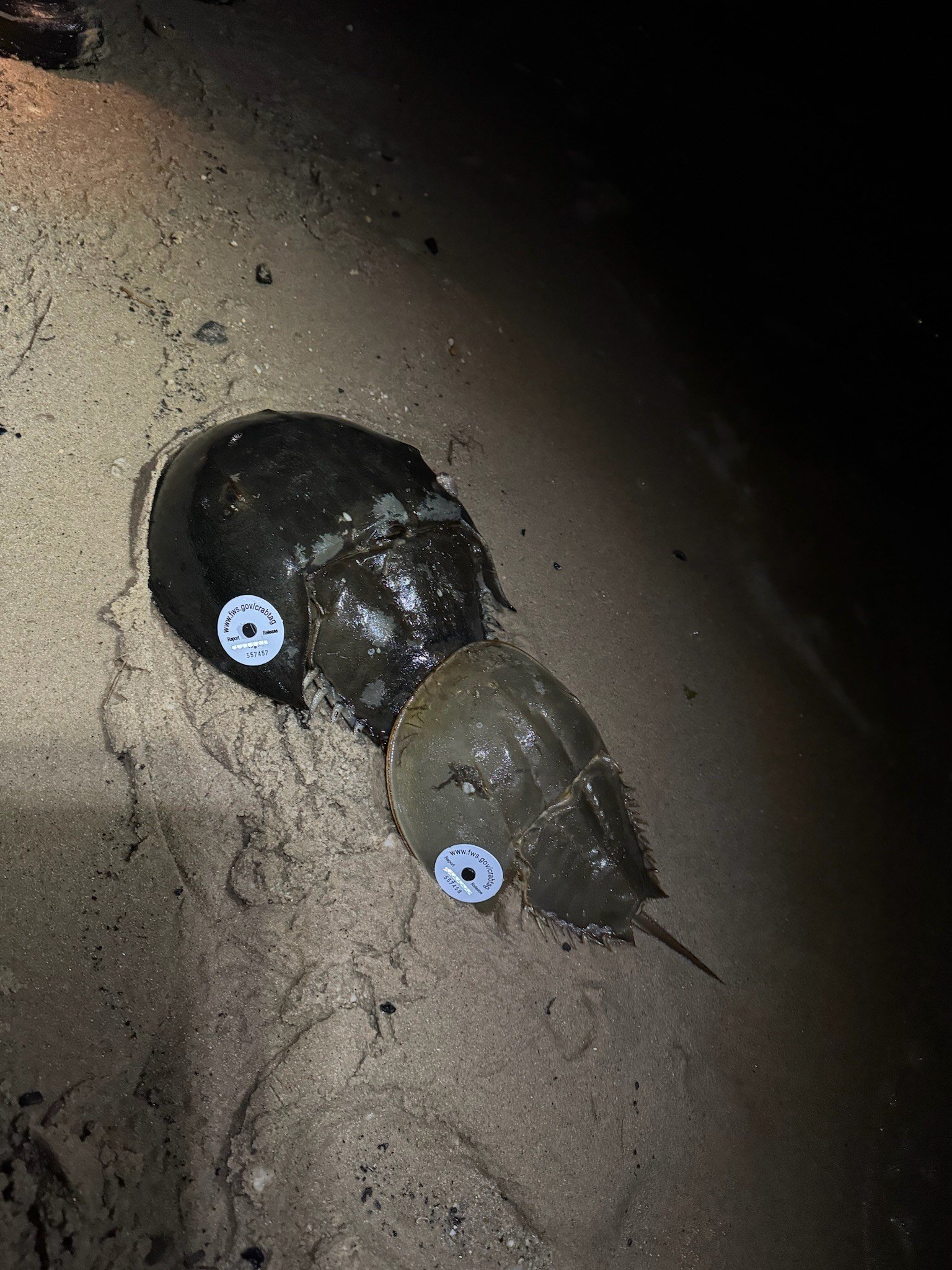Cycle 2 — 2025
CSHH Horseshoe Crab Monitoring Outcomes:
Night 1:
The first night of cycle two, three nights before the new moon. We scheduled our cycle two/night one survey a day early to avoid monitoring during the Memorial Day weekend fireworks show.
It was a rainy evening, but despite the inclement weather, we had our biggest turnout of volunteers! We saw a total of 13 horseshoe crabs, two of which were dead and harvested. We also deployed five tags (bringing the total of deployed tags up to 50 in Hempstead Harbor) and saw three visiting black skimmers skimming the water surface for food.
It is important to note there are lunar closures for horseshoe crab harvesting in New York waters in May and June. Lunar closures are in place during new and full moon cycles (i.e., two days before to two days after a new or full moon). While these closures are in place, it is prohibited to harvest horseshoe crabs for bait (there is no biomedical harvesting permit available in New York). These closures have been implemented by the NYSDEC to aid with conservation efforts by allowing horseshoe crabs to spawn, undisturbed. Closures are enforced by DEC officers throughout the Marine District.
Night 2:
The night of the new moon. We saw a total of 134 horseshoe crabs but deployed no tags, as the remaining tags we had were deployed during the previous survey night.
A cool fact about horseshoe crabs is that, similar to their relative scorpions, they are biofluorescent, a phenomenon when a substance absorbs light of one wavelength (e.g., UV) and then emits visible light. A thin layer within the horseshoe crab exoskeleton contains a compound that is reactive under UV light, causing them to glow green! It is unknown how they use biofluorescence, but it suspected that it could aid in interactions in their environment, such as identifying each other during mating season.
This was the first night we were able to test out our UV flashlight and we discovered some really cool results! We saw that younger-looking horseshoe crabs emitted a brighter green color, while older-looking horseshoe crabs were dim.
Above: A female horseshoe crab with a male horseshoe crab clasped to her back. A UV flashlight is shining over the pair, appearing to glow green, showing biofluorescence. The male is glowing brighter and seems to be younger than the female (video by Sarah Stromski, 5/26/25)
Night 3:
Two nights after the new moon. We saw a total of 142 horseshoe crabs and since we received more tags from the DEC, we were able to deploy 12 tags.
Above: UV flashlight shining across the underbelly of a male horseshoe crab, showing biofluorescence (video by Sarah Stromski, 5/29/25)
Photo slideshow includes: a group of young horseshoe-crab-monitoring volunteers, a horseshoe crab’s biofluorescent underbelly under a UV flashlight, a tagged pair of horseshoe crabs, a biofluorescent pair of horseshoe crabs (photos by Steph Sobel on 5/23/25, and Sarah Stromski on 5/29/25, respectively)






